December, 1945. Nag Hammadi
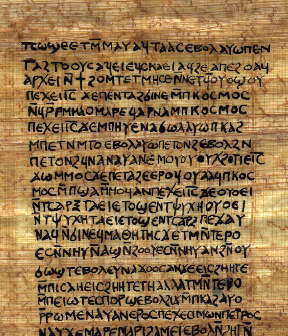
WW2 was over. Victors were busy sharing the spoils. Colonies were awaiting release. Feudal systems were wearing at the cuffs.
In Upper Egypt, a farmer, Mohammed Ali Samman was digging for 'sabakh' (kind of guano, bird droppings used as natural fertiliser), near Nag Hammadi. He discovered an earthen jar. Overcoming his initial fears of breaking open the jar (it may well contain djinns), he found some books! Disappointed with his 'find', he dumped this in his house along with firewood and straw. His mother used some of the books and pages to start the fire.
20 years later after passing through many hands, it was found that these were the same books that the Catholic Church has been, allegedly, trying to suppress for 1500 years. Only 3 more copies of this book existed in the world.
Till the Nag Hammadi finding, there were only three surviving copies of the Gnostic book, The Pistis Sophia. Till the Nag Hammadi finding, there were only three surviving copies of the Gnostic book, The Pistis Sophia - the Askew Codex (in the British Museum), The Berlin (or Akhmim) Kodex (acquired in Cairo, Egypt) and the Bruce Codex (bought in Thebes, Upper Egypt, by Lord James Bruce and donated to the Bodlein Library).
The Dead Sea Scrolls

Two years later, in 1947, at Wadi Qumran, 1953, near the Dead Sea, then in Jordan, now in Israel, a Bedouin shepherd boy was finding himself short of his goats. He set out in search of his goats - and he wandered into caves.
And in these dark caves he made a discovery that shook the Christian world. He found earthen jars containing ancient scrolls written in papyrus, animal skin and copper plates also. Over the next 9 years, more than 900 such documents were recovered from 11 nearby caves. The Jordanian authorities handed it over to a team of (mostly) Catholic priests. For 40 years, this team did not release much information. International uproar about the slow progress and the role of the Catholic Church (re. suppression of these documents for more than 40 years) finally forced the teams to open up the documents.
West Asia
Between 1850-1900, archaeologists dug up more than 400,000 clay tablets in West Asia. This loot was carried back to the British Museum, Louvre France, Imperial Museum in Berlin, University Of Pennsylvania. The latter digs and finds were retained Iraq, Turkey and Egypt. Less than one fifth have been published so far.
Elam
The Elamite capital is called by Western archaeologists as Susa - but correctly is Shushan (was it so called because it was the seat of of शासन 'shaasan', the Sanskritic word for governance). It was initially populated by an aboriginal tribe called 'uwaja' (did the Elamites call them पूरवज 'purvaja' - Sanskritic for ancestors) and some other Greek sources called them Uxii.
Alfredo Trombetti, an Italian Elamologist, was an Italian linguist who theorised that all the languages in the world evolved from one language - monogenesis of language, his theory is called. In his book, Elementi Di Glottologia, he worked backwards to North India as the source of all languages. Trombetti learned French, German, Greek, Hebrew and Latin by himself. He spoke these languages when he was 14 years old. In the colonial era, where Britain was the single super power, such credit given to India was not welcome.
Archibald Henry Sayce's essays dealing with Elamite: 'Amardian or Protomedic Tablets in the British Museum' settled the initial direction for interpretation for Elamite studies.
Indic Connections
 Hittites were one of the main branches of Indics in the region. Ramesis II is about 100 years after Akhenaten - (एकनाथन Eknathan meaning One God in Sanskrit). Akhenaten’s father is AmenhotepIII who wanted to marry the Mittani (another Indic kingdom) princess of Dashratta (Tushrutta). The Indic influence and presence is overwhelming in the Levant at this time. E.g. Instead of building mausoleums, Akhenaten built temples - much like other Indian kings.
Hittites were one of the main branches of Indics in the region. Ramesis II is about 100 years after Akhenaten - (एकनाथन Eknathan meaning One God in Sanskrit). Akhenaten’s father is AmenhotepIII who wanted to marry the Mittani (another Indic kingdom) princess of Dashratta (Tushrutta). The Indic influence and presence is overwhelming in the Levant at this time. E.g. Instead of building mausoleums, Akhenaten built temples - much like other Indian kings.
After this there is a slow fadeout and decrease of the Indic rule in the Middle East. The Achmenaid Persians take-over from Elamites (The Indic Dravidians who settled Persia). Egypt became a Roman colony - and turned westward. Judaism began to grow.
Why this change?
Slavery Continues

West Asian reluctance to give up slavery, made Indo Aryan rulers disengage politically from West Asia and Middle East. Judaism, Christianity and Islam, the three ‘desert religions’, gained their first converts from slaves, but continued with slavery till the 20th century.
The 3 ‘desert religions’ instead of reforming slave societies, just enabled the transfer of slave titles. Freedom meant old slaves became the new slave masters. Non-political Indian role in West Asia and Middle East continued to grow in terms of trade and learning. Babylon became a part of Alexander’s empire (and then the Roman Empire).
The slave revolt of Egypt by Moses, made the Indic rulers reform and distance themselves from the slave owning societies. Hence the fade out of the Indic rule from the Middle East - but the continuation of Buddhist influences, trade and peoples contact.
This slave reform and distancing of Indic rulers from slave societies was led by Indian reformers like Buddha and Mahavira. This happened not around and after 500 BC as determined by Western dating logic (which needed to fit the Aryan Invasion Theory, The 'evolution' of Greek and Romans) - but around 1000 BC.
Reformist Rulers & Inherited Systems
In the extended India, slavery was an inherited social system - for which the Hittites made some liberal laws. The inherited norm of slavery was sought to be liberalised, in incremental manner by the Indic societies of the Middle East. This incremental liberalisation possibly created a backlash against the ‘holier-than-thou’ Indians, by the slave-owning, ruling classes of the non-Indic societies - and the newly liberated classes also.
Who were blamed
Possibly, the Indic reformers. The liberated blame the liberator. Much like Gandhiji was killed by a Hindu.
I can hear people screaming, ‘Who asked you to give such fancy ideas like dignity, freedom to these slaves. Look now what has happened”. And when the unemployed, hungry slaves were turned back by their bankrupt masters, the slaves must have said, “You have created these rifts. All that we asked for was a little less of work and a little more of comfort. We don't want this freedom. Can we eat freedom!”
The Moses Connection
This liberalisation triggered a (vengeful) Moses to walk out of Egypt and formed Judaism - a monotheistic religion. The (suspected) Pharaoh at that time was Ramesis-II roughly between 1300-1200 BC. This is also when the Battle of Kadesh happened with the Hittites, which resulted in the most famous treaty.
The cause of this battle was the defection of King Benteshina of the Amurru (is the correct name Bente = वंश vansha in Sanskrit and shin = moon goddess; meaning Chandravanshi?). The Amurru, (also known as Amorites) possibly switched sides from being an Egyptian vassal, to a Hittite ally. Were Amurrus, the Mauryas who later defeated the Seleucid army?
Moses & Christ
Christ - a more forgiving man than the vengeful Moses, came in a little later. His life as a young man has been obscured. Till 400 AD, Buddhism was blanking out Christianity. Constantine’s council of Nice and force of the state and church oppression thereafter ensured the survival and growth of Christianity.
Mani - Linking Buddhism to Christ
Mani, a Buddhist preacher who also talked of Christ as a major reform teacher was seen as a major threat by the Church from 250 AD to till about 1500 AD.
Buddhism had already spread to Sri Lanka, India and Afghanistan - making waves. The Church was having a uphill time in gaining believers from new religions - like Buddhism, and Mani, a Persian Buddhist teacher trained in India. The Manichean religion was an eclectic mix of Buddhism, Zoroastrianism, Hinduism, Mithraism. It appealed to significant sections of the population, as it showed continuity from earlier faiths. It recognised earlier prophets and teachers like Buddha and Jesus - and Mani as the last teacher in this line of prophets.
Christian writers (Hippolytus and Epiphanius) write about Scythianus, who visited India around 50AD from where he brought ideas about Apokatastasis (re-birth) - "the doctrine of the Two Principles". Scythianus' pupil Terebinthus (Tere - Lord + binthu = Hindu; Hindu Lord) called himself as a "Buddha" ("Buddas"), as mentioned in writings of Cyril of Jerusalem). Terebinthus went to Palestine and Judaea where he met the Apostles "becoming known and condemned", and ultimately settled in Babylon, where he transmitted his teachings to Mani.
This religion spread far - from Europe to China. In China, this was integrated with Buddhist beliefs (Taisho Tripitaka). In Afghanistan, Iran it was Aiyn-e-Mani. In Europe it became Manichean. This posed a challenge to the Church. The response of the Church - wipe the very thought of a different belief.
Simply put, this religion posited that there is an eternal struggle between Good and Evil. Men should protect themselves against evil (the Roman Church feared that this may lead to Devil worship) and lead a life of virtue. The Vatican Church believed that there was God and he did not create evil.
Women (Eve) did. This was the Original Sin. All mankind are sinners now and need to pray to God (and Jesus was his son and sent to Earth to save mankind) and redeem ourselves. St.Augustine was canonised for his conversion from Manichean to Christianity.
Pistis Sophia, Gnostics & Buddhism
Pistis Sophia (surviving as Bruce Codex, Berlin-Akhmim Codex and Askew Codex) were suppressed by Britain and Germany for decades. Rediscovered as Dead Sea Scrolls and Nag Hamamdi manuscripts, research has been slowed to a crawl. The question now is no more ‘did Buddhism influence Christianity’ but ‘how much did Buddhism influence Christianity’. Do these manuscripts show a greater extent of Buddhism than colonial Britain, supremist Germany and the Vatican would like to admit?
Slavery In India
Slavery in India, disappeared from about 1000 BC. Zilch. Nyet. Non.
While the Levant and the Occident continued with slavery for the next 3000 years, till 1900 AD, in India (referring to the Greater India, including the Hittites and Mitannis) after 1100 BC, slavery vanished. Compared to the retributive and vengeful Hammurabi’s code, the Indic rulers of Middle East (the Hittites, Mittanis and Elamites) already had a more liberal and humane legal system. More on this here.
Enter The Ahimsa Twins
Buddha and Mahavira come in.
Western historian dates are slotted for 500 BC for the ahimsa ‘twins’. What if the Buddha and Mahavira are from the 1000 BC - and led the reform against slavery. This also ties in with the historic (and unique) movement of Indian diet towards an increase in vegetarian component.
Indic rejection of slavery, led to their disengagement from the Middle East, where other cultures, continued with slavery. From dominance, Indians became satisfied with presence and influence. Capture by slave traders and slavery was also the reason, that possibly, Indian traders preferred buyers to come to them. This also accounts for the system of unarmed combat that travelled with Buddhist monks to China - and became Chinese Kung Fu, or the Kalaripayattu (in Kerala) or the system of लठैद (combat practitioners using 'lathis' - bamboo sticks).
The Ahimsa Appeal
 The exhortation towards ‘ahimsa’ is an appeal to the ‘oppressors’ to stop ‘himsa’ against all life - and similarly for the oppressed to resolve the social issues by ‘ahimsa.’ There is of course, some merit in taking some issues like oppression at a general level, as a matter of principal - and not to get bogged down in specifics.
The exhortation towards ‘ahimsa’ is an appeal to the ‘oppressors’ to stop ‘himsa’ against all life - and similarly for the oppressed to resolve the social issues by ‘ahimsa.’ There is of course, some merit in taking some issues like oppression at a general level, as a matter of principal - and not to get bogged down in specifics.
Do keep in mind that Elamites, (cousins of modern Dravidians) founded Persia; the Middle East was influenced and had significant presence of Indic Mittanis and Hittites - and India was far bigger than what we see today.
Slave Memory In Indian Society
Slave memory faded out and there are only some stray references in Indian classical literature about slavery - like the Harishchandra story.
Jataka stories (mainly considered as children’s stories in the West) are a reflection of social mores, realities- and also cautionary tales for adults. This Jataka story (click on the link) refers to a “demon’ (another word for a slave trader) and cautions travellers and merchants about slave traders. This 'demon' kidnaps the merchant - but leaves the goods behind. Trade in India is governed by शुभ लाभ 'shubh labh' - and hence Indians have not been major players in drugs proliferation (unlike Japan, the West in which traded Opium in Korea and China), in slave trade, in software virus, in spamming, through out history.
The Greek Dark Age
Around the 1000 BC inflection point, there is another interesting thing that happened - the so called Greek Dark Age. This is a relatively new concept - 1971. Fromm 1200 BC to 900 BC - when the Indic kingdoms, like Hittites, the Mittanis and Elamites were retreating from the Levant, the Greeks went through ‘a catastrophe’.
Two Mycenaen cities, 40 other cities of Turkey, Syria and Middle East were destroyed. Egypt and Mesopotamia were threatened. This was reversed by the revival of trade links with India through the Phoenicians in 900 BC.
Plague, Locusts, Disease
So what was behind the the Indian disengagement from West Asia, the Greek Dark Age and the fall of the XVIIIth dynasty of Egypt.
Moses and Judaism, slavery, revolt of the slaves is my hypotheses. With the walkout by slaves, cities became dirty, plague broke out, agriculture suffered and locusts descended. With malnutrition, hunger and deprivation, came diseases. This led to reform in diet - increased vegetarianism in India.
And Moses claimed credit (and showed how powerful his god was) for the mishaps in Egypt.
What Did This Do In India
3000 years ago, India went ahead and created a new economic model without slavery. The Occident and the Levant were using slaves till 20th century. Middle East’s labour laws even today smack of slave owner mentality.
It was these events in 1000 BC which made two things happen.
It catalysed the refinement and consolidation of Sanskrit, the Vedas, The Ramayana, The Mahabharata et al. And it led to many reform leaders, the Bodhisatvas and Tirthankaras - prime amongst whom were Buddha and Mahavira, who counselled patience, introspection, ahimsa to their followers.
In modern times, the easiest test of oppression is 'statistically significant’ population decline. And there has been no population decline in India to even talk about ‘oppression’ in the genocidal meaning that the West tries equating with India - to cover up their own genocides.
Dates and Periodization
There is one problem with this hypothesis - dates.
Buddha and Mahavira were periodized circa 500 BC by western historians; to ensure that the Greeks got all the credit and that the Aryan invasion theory became feasible. A relook at the dates will support my hypotheses. Even if Buddha and Mahavira are correctly dated, there are the Tirthankaras and Bodhisatvas who did the reform story.
Anton Fuhrer - Fixer Of Dates & Places
The gentleman who is supposed to have ‘fixed’ Gautama Buddha’s birthplace, date and time was a certain Dr.Alois Anton Fuhrer. This gentleman was subsequently accused of having tampered with archaeological artifacts - and the Lumbini artifacts etc.
Call it reform or evolution. Slavery was clearly an inherited institution in some part of the great Indic spread.
 "I know not what course others may take; but as for me, give me liberty, or give me death!" declared Patrick Henry. And promptly enslaved the Blacks and gave death to the Red Indians.
"I know not what course others may take; but as for me, give me liberty, or give me death!" declared Patrick Henry. And promptly enslaved the Blacks and gave death to the Red Indians.



 flooding India with its Lancaster wares - and restricted Indian handloom weavers from competing with Lancaster.
flooding India with its Lancaster wares - and restricted Indian handloom weavers from competing with Lancaster.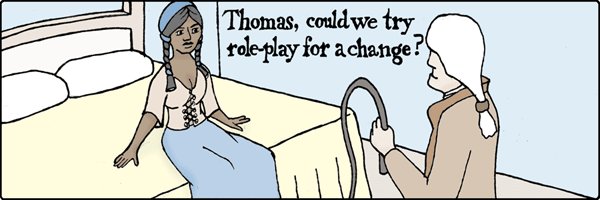

 A cabal of Black conspirators sniffed out Jefferson's secret - his greatest ideas (listed above) came when he dined alone.What followed was diabolical.To stop further such ideas, they recruited Sally Hemmings on a suicide mission.
A cabal of Black conspirators sniffed out Jefferson's secret - his greatest ideas (listed above) came when he dined alone.What followed was diabolical.To stop further such ideas, they recruited Sally Hemmings on a suicide mission.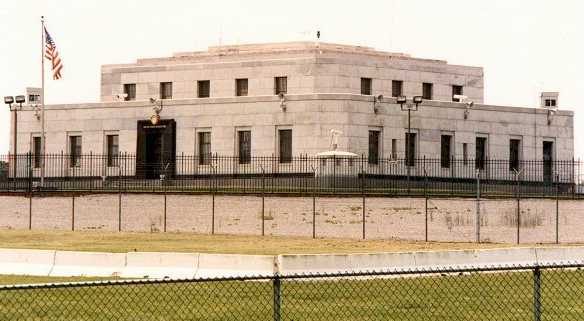


 Governor Gruber claimed that "
Governor Gruber claimed that "

 take away Bill Parish whose time has come.
take away Bill Parish whose time has come.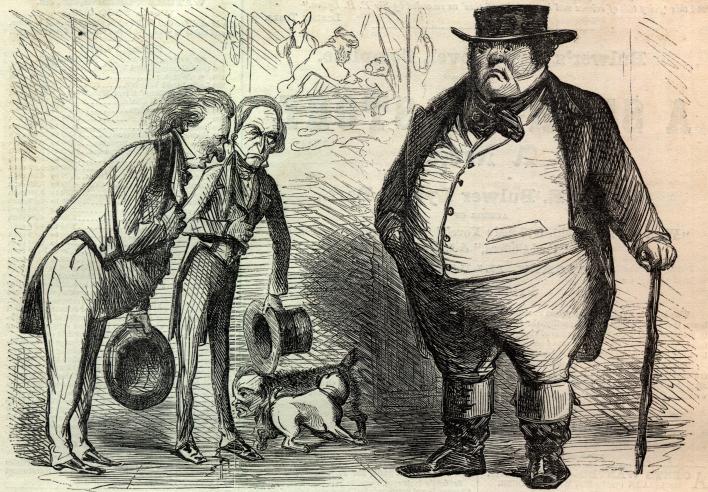 The Pope has recently received a proposal to declare
The Pope has recently received a proposal to declare  I think the rest of us, (the browns, yellows and blacks) are dismissive of these crimes. It is clear to all those who matter (the whites, who else) that this was never meant to be. We the devious (browns, blacks and yellows) are ignorant, backward and don’t understand these truths - and are subverting the natural order of the Whites.
I think the rest of us, (the browns, yellows and blacks) are dismissive of these crimes. It is clear to all those who matter (the whites, who else) that this was never meant to be. We the devious (browns, blacks and yellows) are ignorant, backward and don’t understand these truths - and are subverting the natural order of the Whites.
 At the
At the 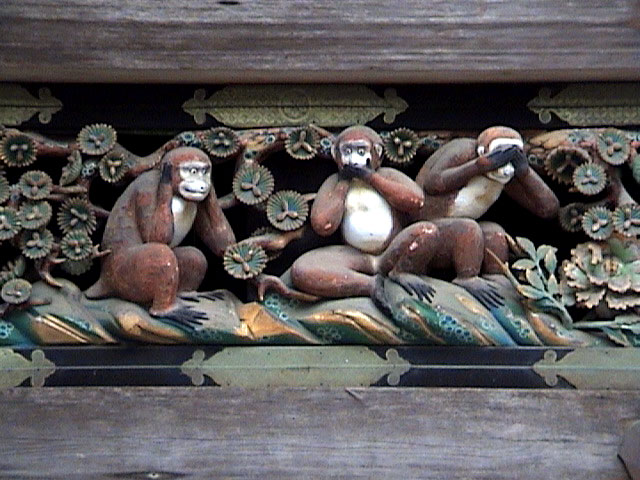








 The exhortation towards ‘ahimsa’ is an appeal to the ‘oppressors’ to stop ‘himsa’ against all life - and similarly for the oppressed to resolve the social issues by ‘ahimsa.’ There is of course, some merit in taking some issues like oppression at a general level, as a matter of principal - and not to get bogged down in specifics.
The exhortation towards ‘ahimsa’ is an appeal to the ‘oppressors’ to stop ‘himsa’ against all life - and similarly for the oppressed to resolve the social issues by ‘ahimsa.’ There is of course, some merit in taking some issues like oppression at a general level, as a matter of principal - and not to get bogged down in specifics. The USA and Australian focus on sports has propaganda motives (Hitler and Soviet Russia learnt from) - like the
The USA and Australian focus on sports has propaganda motives (Hitler and Soviet Russia learnt from) - like the